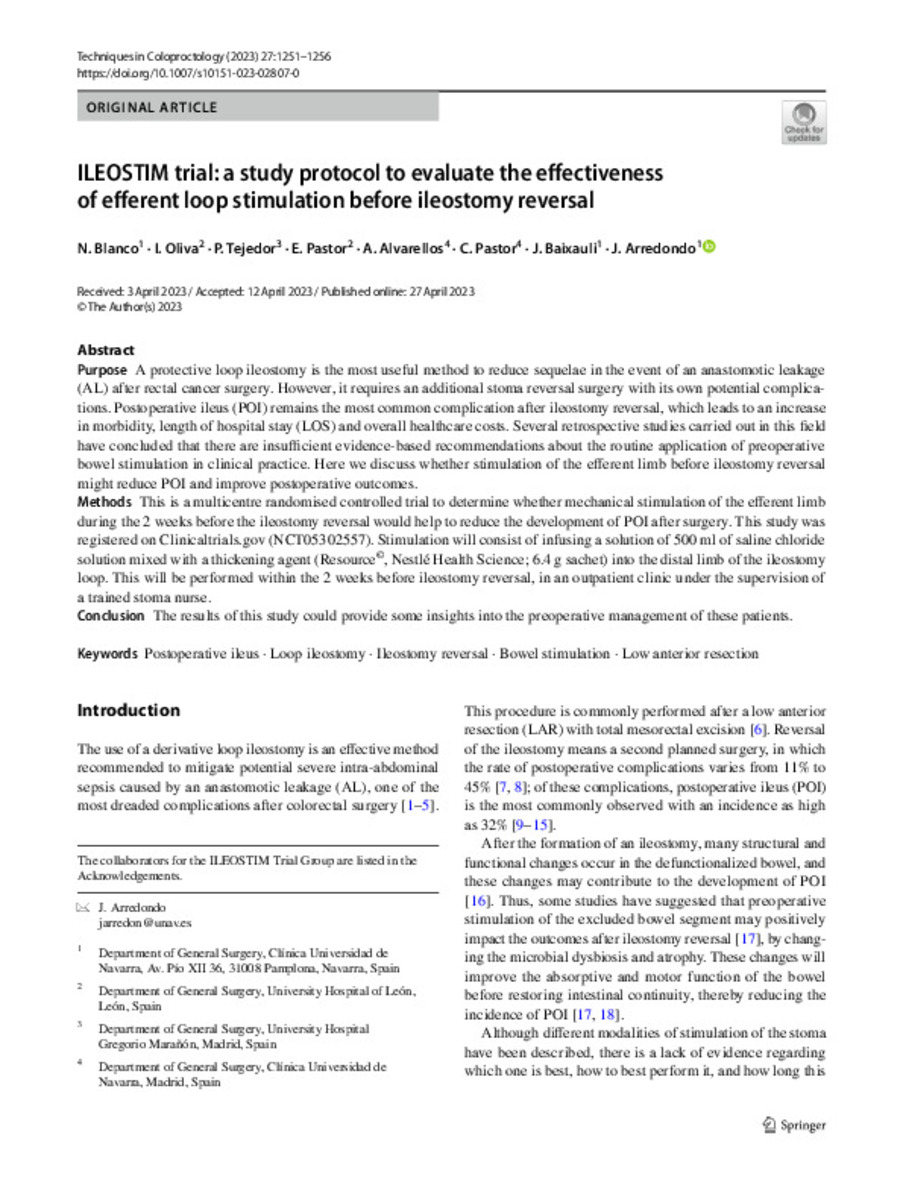ILEOSTIM trial: a study protocol to evaluate the effectiveness of efferent loop stimulation before ileostomy reversal
Keywords:
Bowel stimulation
Ileostomy reversal
Loop ileostomy
Low anterior resection
Postoperative ileus
Note:
This article is licensed under a Creative Commons Attribution 4.0 International License
Citation:
Blanco, N. (N.); Oliva, I. (I.); Tejedor, P. (P.); et al. "ILEOSTIM trial: a study protocol to evaluate the effectiveness of efferent loop stimulation before ileostomy reversal". Techniques in Coloproctology. 27, 2023, 1251 - 1256
Statistics and impact
0 citas en

Items in Dadun are protected by copyright, with all rights reserved, unless otherwise indicated.









